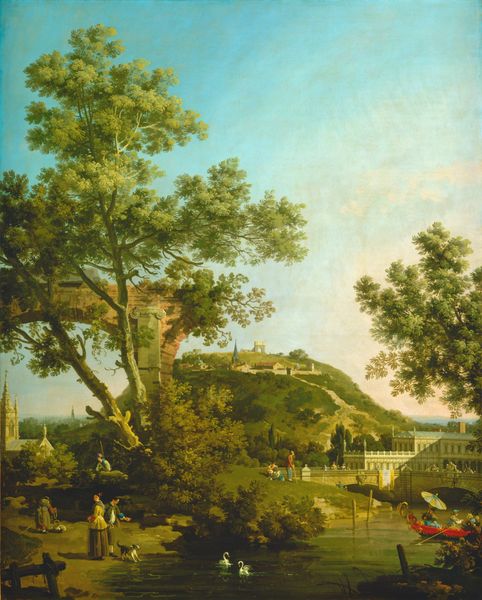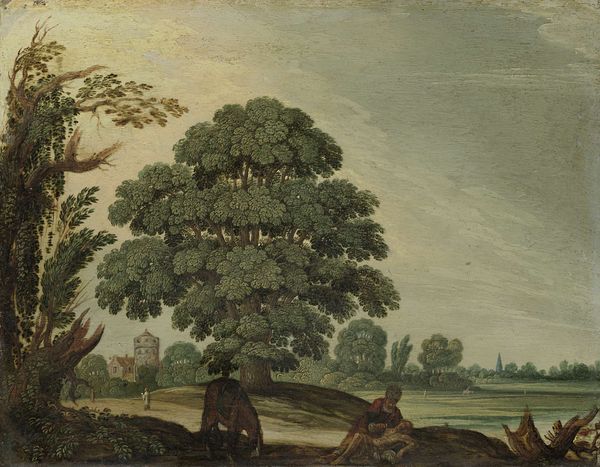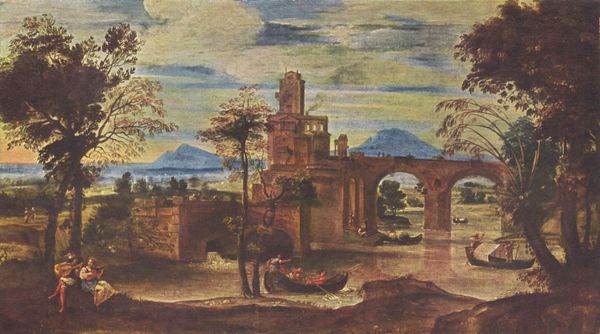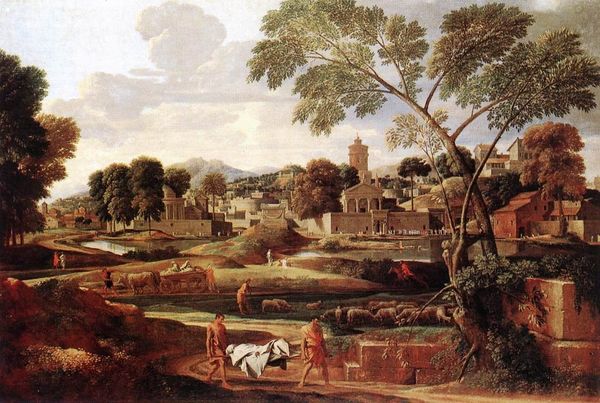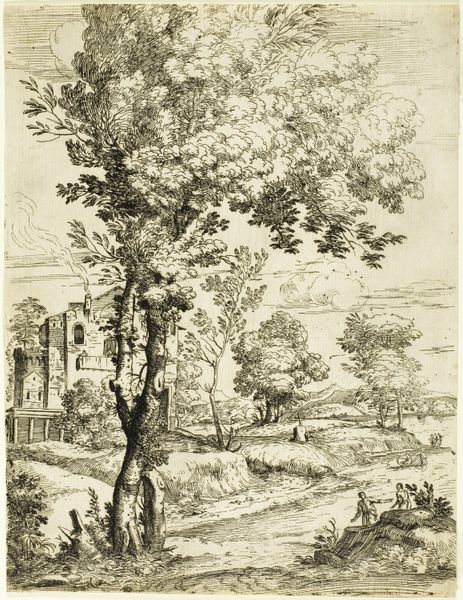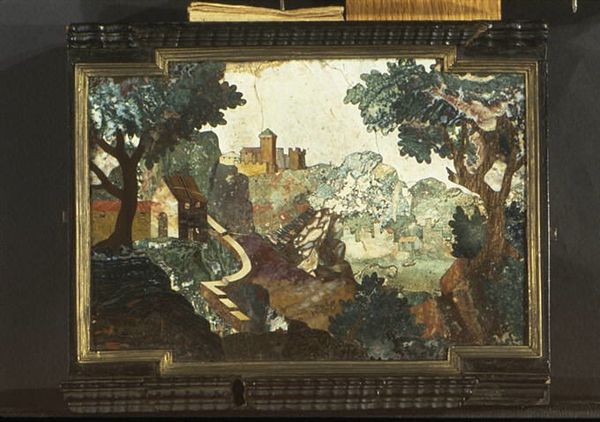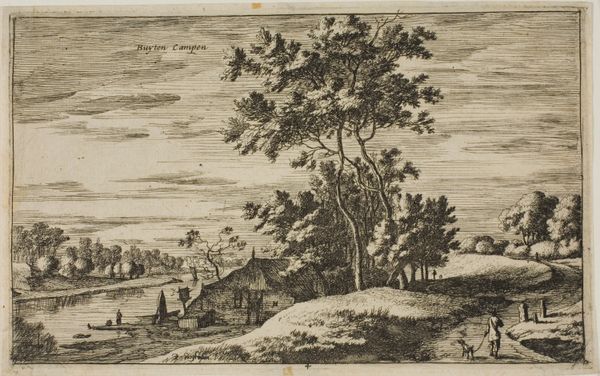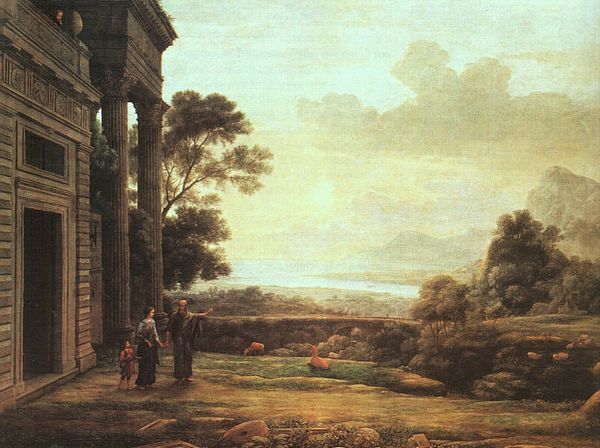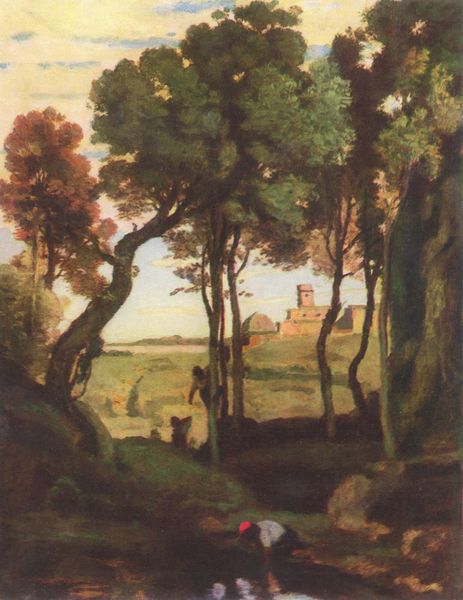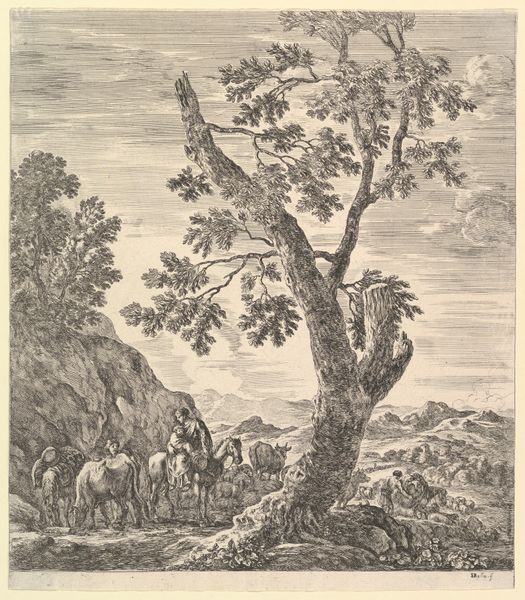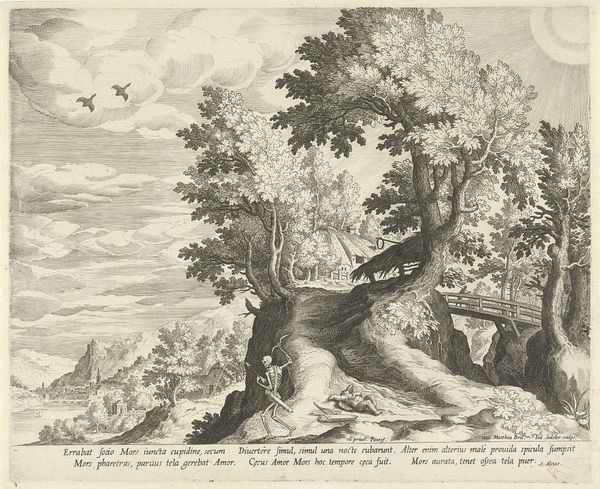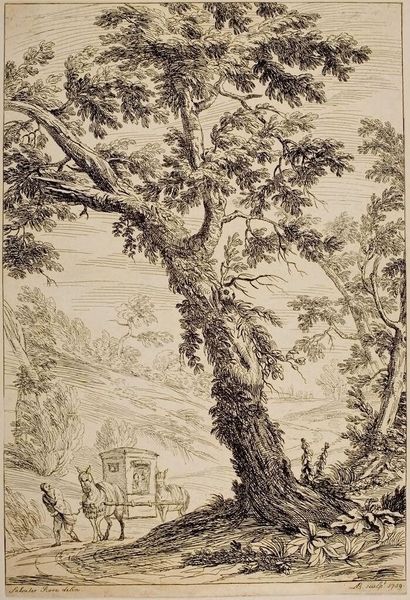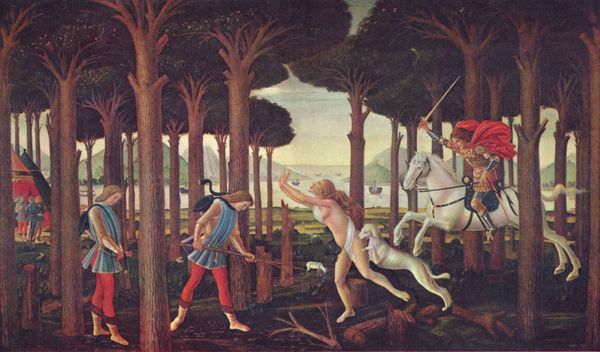
panel, painting, oil-paint
#
panel
#
narrative-art
#
painting
#
oil-paint
#
landscape
#
oil painting
#
cityscape
#
history-painting
#
academic-art
#
italian-renaissance
#
early-renaissance
Dimensions: 240 x 235 cm
Copyright: Public domain
Curator: Sandro Botticelli painted this detail from the Annunciation Cestello around 1490. It's oil on panel. What are your initial impressions? Editor: It's remarkably serene, isn't it? The pale blues and greens create this almost ethereal atmosphere, but the composition feels quite structured and organized. Curator: I agree. The composition, while serene, plays into very specific narratives about the Virgin Mary, the key figure to which this scene refers. Look at the lilies. These were understood as a sign of Mary’s virginity and purity. By placing them so prominently in the foreground, Botticelli isn’t just painting a pretty picture. Editor: Precisely! And note the way Botticelli has balanced the foreground with the landscape and the tree. It provides verticality and anchors the piece but also acts almost like a veil, doesn’t it? Subtly drawing our eye, choreographing the journey. Curator: Indeed. Botticelli’s world was Florence during the rise of powerful figures like Savonarola, who publicly condemned what he viewed as the city's excessive displays of wealth and sensuality. Knowing that, Botticelli's artistic choices feel like subtle acts of resistance against those increasingly conservative voices in Florentine society, don’t you think? Editor: It’s hard not to see the painting through that lens, given how pervasive these cultural tensions were at the time. But focusing on his brushwork, notice the contrast between the sharply defined buildings in the distance and the softness of the foliage. Curator: And Botticelli’s patrons likely would have recognized themselves and their positions mirrored in the city in the background. This painting, as with others during the early Renaissance, subtly reinforced their legitimacy and their right to rule. Editor: The painting functions almost as a meticulously coded message about power, spirituality, and the artistic license Botticelli felt entitled to exercise. It's elegant but also slyly subversive. Curator: Ultimately, it is a testament to Botticelli’s ability to weave together personal vision and political commentary within established artistic and religious frameworks. Editor: A composition that achieves enduring relevance because it speaks so clearly through time with color and form.
Comments
No comments
Be the first to comment and join the conversation on the ultimate creative platform.
